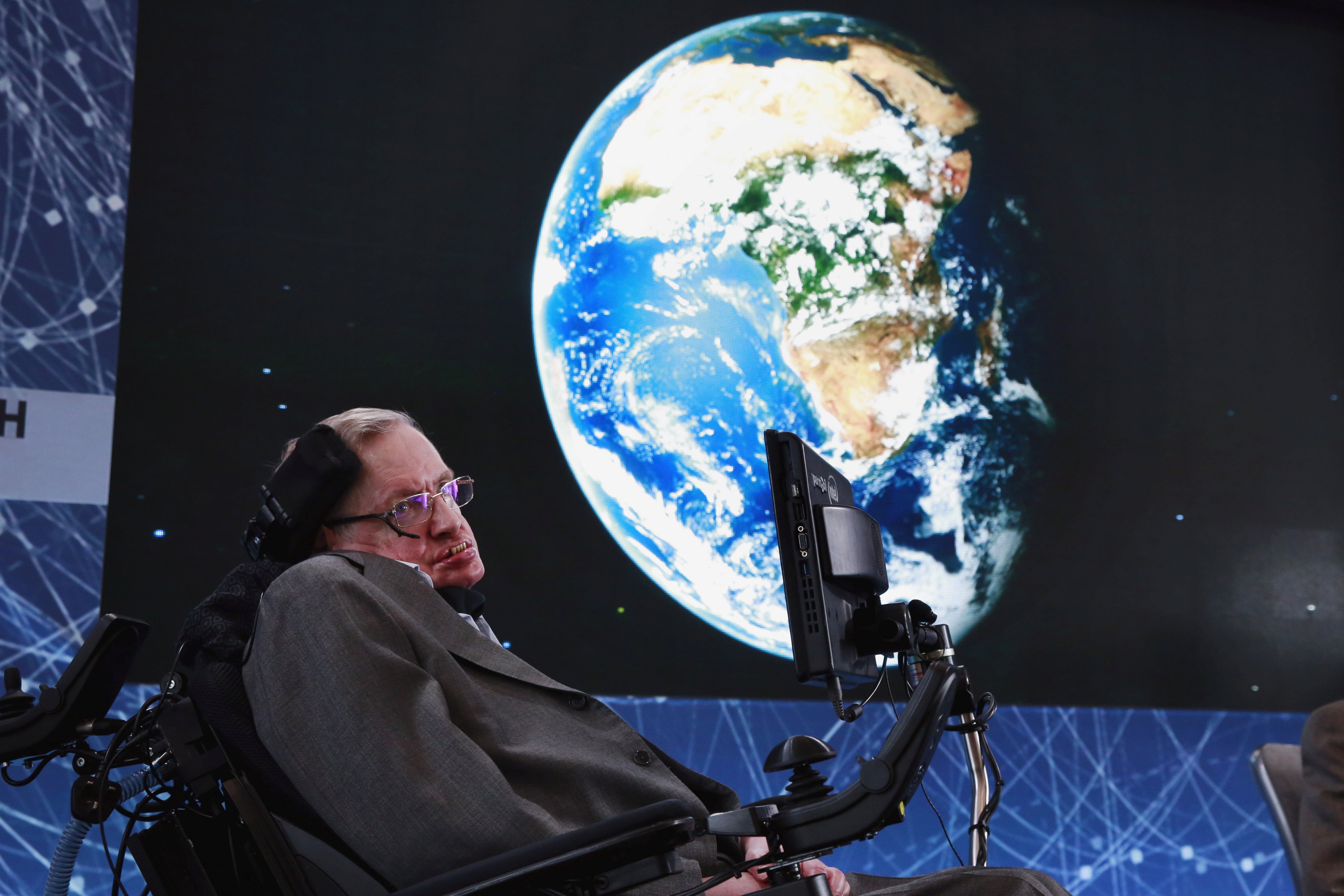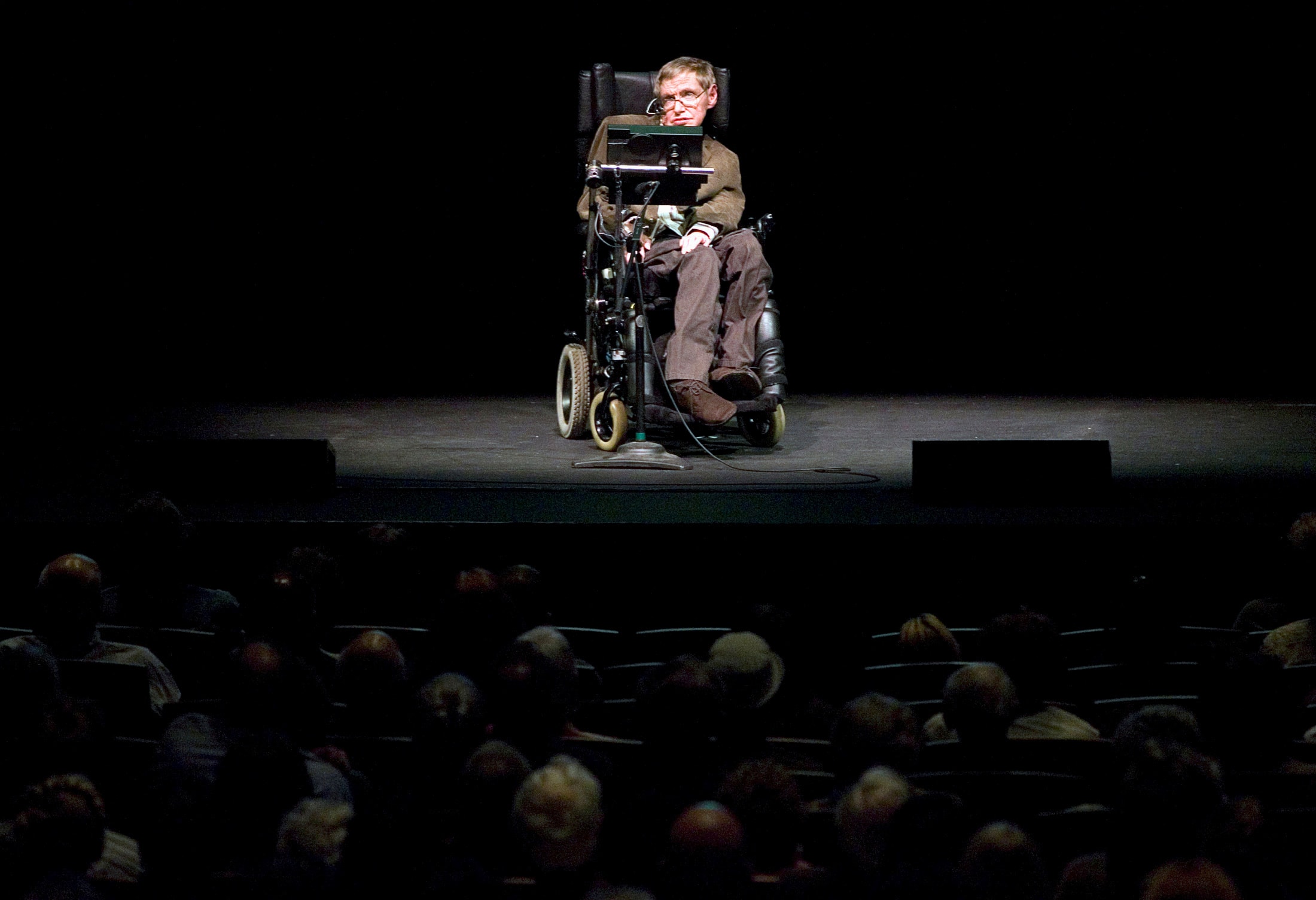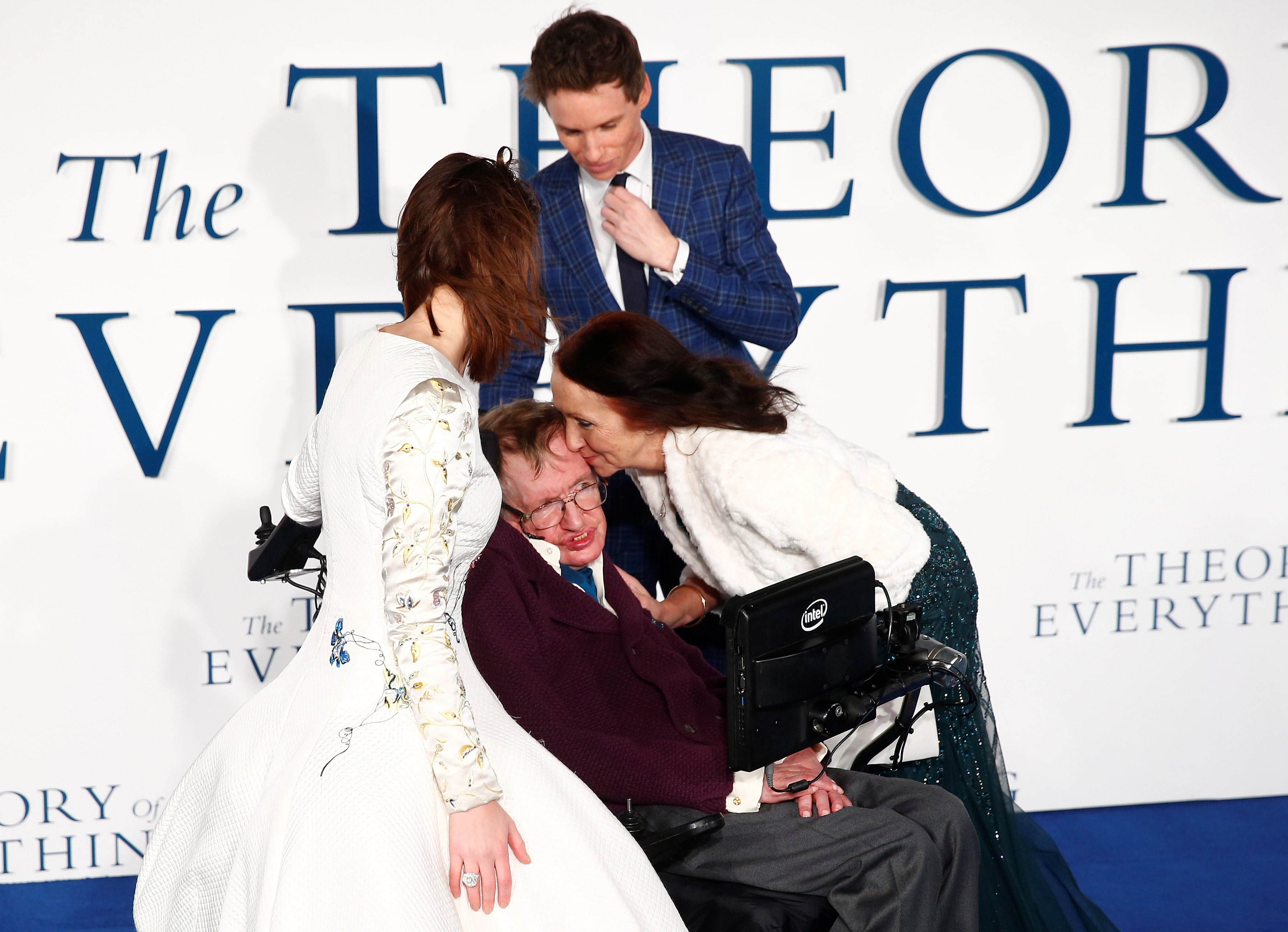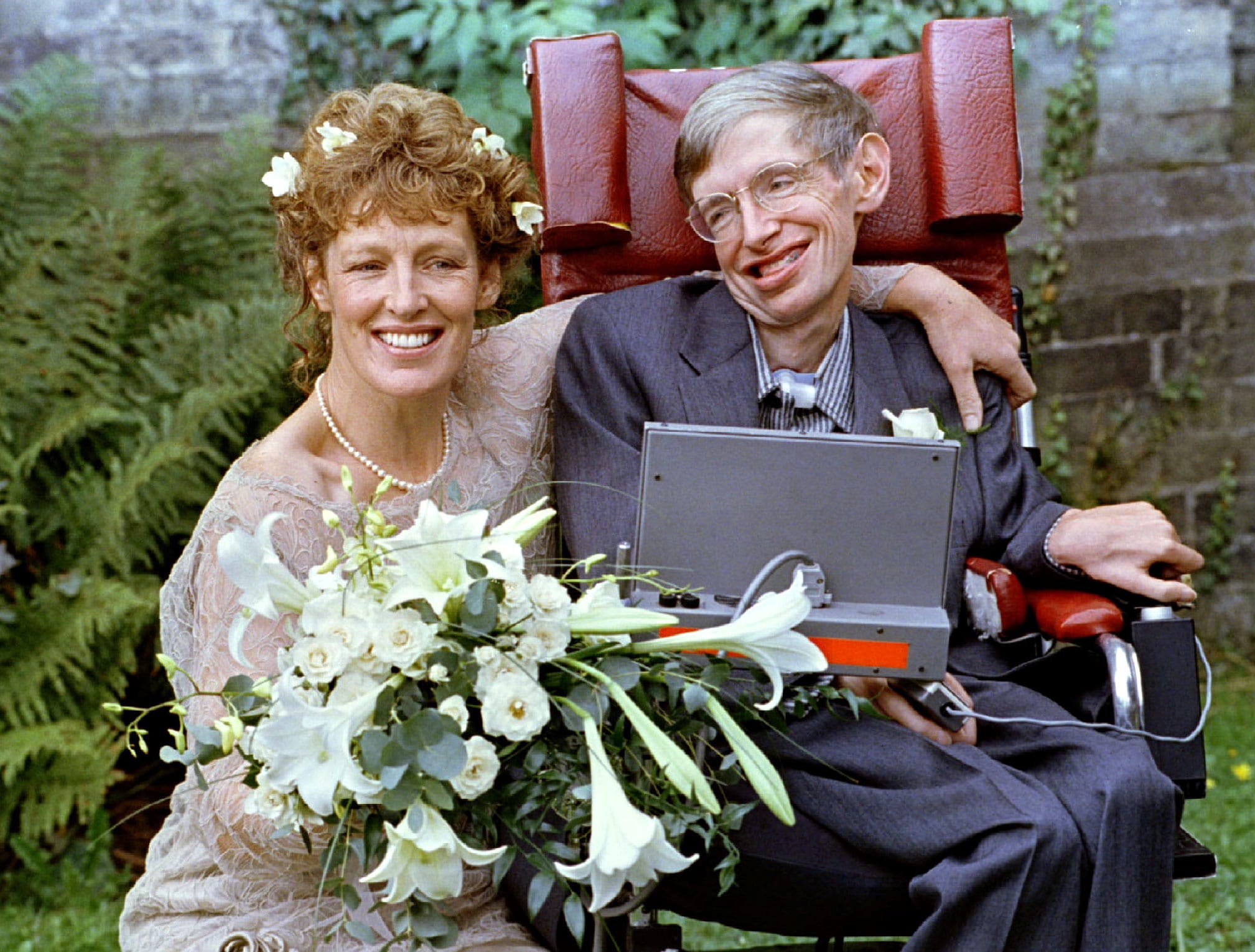Stephen Hawking, who unlocked the secrets of space and time, dies at 76
 Physicist Stephen Hawking sits on stage during an announcement of the Breakthrough Starshot initiative with investor Yuri Milner in New York April 12, 2016. (Photo: Reuters/ File Photo)
Physicist Stephen Hawking sits on stage during an announcement of the Breakthrough Starshot initiative with investor Yuri Milner in New York April 12, 2016. (Photo: Reuters/ File Photo) Stephen Hawking, who sought to explain the origins of the universe, the mysteries of black holes and the nature of time itself, has died at the age of 76.
Hawking‘s formidable mind probed the very limits of human understanding both in the vastness of space and in the bizarre sub-molecular world of quantum theory, which he said could predict what happens at the beginning and end of time.
Ravaged by the wasting motor neurone disease he developed at 21, Hawking was confined to a wheelchair for most of his life.
As his condition worsened, he had to speak through a voice synthesiser and communicating by moving his eyebrows – but at the same time became the world’s most recognisable scientist.
Hawking died peacefully at his home in the British university city of Cambridge in the early hours of Wednesday.
“He was a great scientist and an extraordinary man whose work and legacy will live on for many years,” his children Lucy, Robert and Tim said. “His courage and persistence with his brilliance and humour inspired people across the world.”
Hawking shot to international fame after the 1988 publication of ““A Brief History of Time”, one of the most complex books ever to achieve mass appeal, which stayed on the Sunday Times best-sellers list for no fewer than 237 weeks.
“”My original aim was to write a book that would sell on airport bookstalls,” he told reporters at the time. ““In order to make sure it was understandable I tried the book out on my nurses. I think they understood most of it.”
The physicist’s disease spurred him to work harder but also contributed to the collapse of his two marriages, he wrote in a 2013 memoir “My Brief History”.
In the book he related how he was first diagnosed: “I felt it was very unfair – why should this happen to me,” he wrote.
“At the time, I thought my life was over and that I would never realise the potential I felt I had. But now, 50 years later, I can be quietly satisfied with my life.”

Professor of mathematics at Cambridge University Stephen W. Hawking discusses theories on the origin of the universe in a talk in Berkeley, California, March 13, 2007. (Photo: Reuters/ File Photo)
FILM PORTRAYAL
US space agency NASA said: “His theories unlocked a universe of possibilities that we and the world are exploring.”
Tim Berners-Lee, inventor of the World Wide Web, said: “We have lost a colossal mind and a wonderful spirit.”
Hawking‘s popular recognition became such that he appeared as himself on the television show “Star Trek: Next Generation” and his cartoon caricature appeared on “The Simpsons”. He narrated a segment of the opening ceremony of the London Paralympic Games in August 2012, the year he turned 70.
A 2014 film, “The Theory of Everything”, with Eddie Redmayne playing Hawking, charted the onset of his illness and his early life as a brilliant student.
“We have lost a truly beautiful mind, an astonishing scientist and the funniest man I have ever had the pleasure to meet,” Redmayne said.
In Cambridge, Hawking‘s university college Gonville and Caius flew its flag at half mast.

Jane Wilde Hawking kisses her ex-husband Stephen Hawking as she arrives at the UK premiere of the film “The Theory of Everything” which is based around Stephen Hawking’s life, at a cinema in central London December 9, 2014. Actors Eddie Redmayne and Felicity Jones, who play Stephen and Jane in the film, look on. (Photo: Reuters/ File Photo)
“At Caius he will always be ‘Stephen‘ – the man whose wicked sense of humour enlivened high table dinners and saw him spinning uproariously around hall in his wheelchair to the strains of a waltz at a college party,” it said in a tribute.
Since 1974, Hawking worked extensively on marrying the two cornerstones of modern physics – Einstein’s General Theory of Relativity, which concerns gravity and large-scale phenomena, and quantum theory, which covers subatomic particles.
As a result of that research, Hawking proposed a model of the universe based on two concepts of time: “”real time”, or time as human beings experience it, and “quantum theory’s “imaginary time”, on which the world may really run.
“Imaginary time may sound like science fiction … but it is a genuine scientific concept,” he wrote in a lecture paper.
He caused some controversy among biologists when he said he saw computer viruses as a life form, and thus the human race’s first act of creation.
“”I think it says something about human nature that the only form of life we have created so far is purely destructive,” he told a forum in Boston. ““We’ve created life in our own image.”
Another major area of his research was into black holes, the regions of space-time where gravity is so strong that nothing, not even light, can escape.
When asked whether God had a place in his work, Hawking once said: ““In a way, if we understand the universe, we are in the position of God.”

Stephen Hawking and his new bride Elaine Mason pose for pictures after the blessing of their wedding at St. Barnabus Church September 16, 1995. (Photo: Reuters/ File Photo)
PERSONAL LIFE
He married undergraduate Jane Wilde in July 1965 and the couple had Robert, Lucy and Timothy. But Hawking tells in his 2013 memoir how Wilde became more and more depressed as her husband’s condition worsened.
“She was worried I was going to die soon and wanted someone who would give her and the children support and marry her when I was gone,” he wrote.
Wilde took up with a local musician and gave him a room in the family apartment, Hawking said. “I would have objected but I too was expecting an early death …,” he said.
He divorced Wilde in 1990 and in 1995 married one of his nurses Elaine Mason, whose ex-husband David had designed the electronic voice synthesiser that allowed him to communicate. The pair divorced in 2007.
Stephen William Hawking was born on January 8, 1942. He grew up in and around London. After studying physics at Oxford University, he was in his first year of research work at Cambridge when he was diagnosed with motor neurone disease.
“The realisation that I had an incurable disease that was likely to kill me in a few years was a bit of a shock,” he wrote in his memoir.
In fact there were even advantages to being confined to a wheelchair and having to speak through a voice synthesiser.
“I haven’t had to lecture or teach undergraduates and I haven’t had to sit on tedious and time-consuming committees. So I have been able to devote myself completely to research,” he wrote.
“I became possibly the best-known scientist in the world. This is partly because scientists, apart from Einstein, are not widely known rock stars, and partly because I fit the stereotype of a disabled genius.”
Reuters



